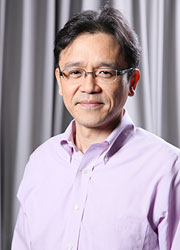Even back in the ZX2 days almost a decade ago,
@Whitigir had discovered that disabling sound adjustment app would change the sound signature of the Walkman. I think it goes to show that the Walkman’s sound quality is not just from its hardware design but also firmware level sound processing(does direct source even really mean it’s truly direct source mode?)
https://www.head-fi.org/threads/sony-nw-zx2.742609/page-553#post-12001118
When you turn EQ on, with everything set to "0" the EQ circuitry is activated, even when the EQ settings are 0, so the active circuit elements have changed.
So the same for Direct On, vs Off, etc. Every change to the configuration/settings results in changes in the SW and Electronics. This is what I think is responsible for sound differences.
To think of change to a setting as "pure", and not take into consideration all the other changes that the setting change will trigger, is due to our lack of knowledge in these areas. And that as users, technology has become too complex for the average person to comprehend. So we view things as black boxes, believing that we do not need to look inside and see the gears, just understand, and use, the "action" of the black box. i.e. Does the average person think of what is happening inside a hand held calculator when they are using it?
One explanation for sound changes when FW/Settings are changed, is that Sony has done some hidden DSP settings. I believe that is not the case, and it is an unintended result of changes to a complex system.
We tend to view things as a black box, without thinking of what is happening in the background details of exactly how a setting affects the system.
The "black box" viewpoint lacks any detailed understanding of what is happening in a system/circuit, and bears a large responsibility for why there are major disagreements in a lot of areas. Another factor is that we lack data, and real knowledge in many areas.
It is a similar viewpoint that results in the conclusion that an SD card cannot affect sound. It's a back box for storing bits. Therefore all black boxes are the same, because the bits are the same for all the boxes.
Or the material/mix of a short piece of wire, or the braid configuration of an IEM cable.
Does making a wire using OCC (Ohno Continuous Cast) process, where the wire is drawn through the dies at slower speeds and lower temperatures make a difference?
Or the material that a 4.4mm jack is made from. Or the solder that is used. Or that Deoxit would make any important difference... etc. etc
Different S/W paths and logic activated, different circuit elements energized or de-energized, more/less drain on the power, higher/lower frequency of power drain, and on and on. All from toggling the state of a setting from on, to off. Or vice versa.
That the changes to the system could affect sound? A better question is why it would not.
And there are a myriad of settings, and complex interactions from the many different combinations that result from the changes in the settings.
There are really a lot of things that we do not understand.
In a way, we are not much different from our ancestors who saw lightning from the sky, and understood that the Gods were angry, and needed us to make sacrifices to appease them.....
And if it works, then continue to make the appropriate sacrifices. The Gods can be vindictive.























